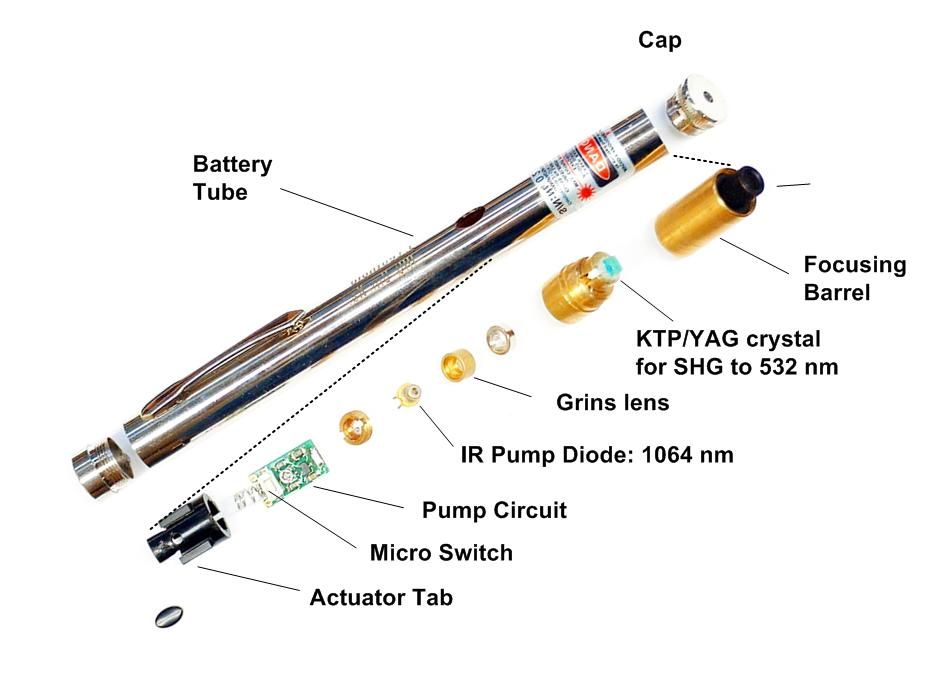 http://blog.gadgettown.com/wp-content/uploads/2010/07/Green-laser-pointer-structure.jpg
http://blog.gadgettown.com/wp-content/uploads/2010/07/Green-laser-pointer-structure.jpg
Laser pointer label compliance is a safety issue affecting the UW campus. This project will develop a simple test to evaluate the validity of a laser pointer radiation class label.
Option 1) Optical power meter test stand similar to NIST's (meter borrowed from instructional labs)
Option 2) At-home test for consumers based on iPhone and other mobile device cameras? Shine laser on some standard readily available specular reflector (Kleenex?) and image along with some standard light source (LED, iPhone white screen?) with mobile camera.
Background:
National Institute of Standards and Technology (NIST) researchers have tested 122 laser pointers and found that nearly 90% of green pointers and about 44% of red pointers tested were out of compliance with federal safety regulations.
The published article is freely available online (http://iopscience.iop.org/0957-0233/24/4/045202/ ) and suggests that most common commercial green and red laser pointers can damage the retina if momentarily flashed (<0.25s) across the eye. UW presenters routinely use laser pointers which likely carry a (only marginally safe) 3R class label and which actually are hazardous 3B class devices.
Green: "The power output from 11 of the 12 devices exceeded the Class 3R limit at one or more wavelengths, and as such, they operated as de facto Class 3B devices" Red: "the power output from 6 of the 11 devices exceeded the Class 3R limit and, as such, they operated as de facto Class 3B devices,"
"More powerful Class 3B and/or Class 4 lasers are capable of inducing injury from even momentary exposure (<0.25 s) [8, 9]. In fact, the American Standard for the Safe Use of Lasers (ANSI Z136.1-2007) dictates the use of protective eyewear, designated laser control areas, laser hazard signage, and laser safety training for all Class 3B and Class 4 lasers, thereby prohibiting the use of these products for demonstration purposes by untrained users [8, 11]. "
Project suggestions:
Develop and evaluate simple test stands for comparing an uncertified laser pointer to a standard and for absolute measurements. Evaluate filters to bring existing laser pointers into compliance.
*Carlsmith *Unks